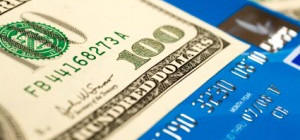Your credit card statement is something you need to go through carefully if you own a credit card. It is not similar to any other bill that you receive at home. The statement is a summary of all the transactions you have made, outstanding amount, reward points earned/redeemed, etc.
However, credit cards statements may often contain errors or mistakes like purchases that you have not made. If not identified, such entries can increase your debt. Hence, you need to go through the statement with precision every month to take control of your outstanding debt.
Few of the things that you have to check include:
Outstanding amounts
Credit card statement reflects two amounts, namely minimum due amount and total due amount.
The minimum amount due is a specific percentage of the total amount due. Paying the minimum due amount ensures that no additional charges are added to the next bill. However, the entire outstanding amount will add on.
Tip: Always pay the total due amount in order to avoid a negative impact on your credit score.
Payment due date
You have to pay either the minimum or total amount within the payment due date. Doing so will not impose any interest or late payment fee on your outstanding debt.
The payment due date is generally 15 days after the end of your credit card statement generation date.
Billing cycle
Generally, a billing cycle is of 30 days. Transactions made within this period must be repaid within the payment due date. The due date for payment appears after 15 days from the end of the billing cycle. This phase is also known as the grace period.
Opening balance
Your credit card bill shows the outstanding balance from the previous statement as an opening balance.
New credits
Your statement shows the amount you have paid towards your credit card bill payment as new credits.
New debits
The new debits section displays the total expenses you have made with your credit card during the current billing cycle.
Available credit limit
Your bill includes the available credit limit with your credit card. It is the amount after subtracting your total amount due from the pre-set credit limit.
Total credit limit
Your credit card statement mentions the maximum amount that you can spend with your credit card as the total credit limit.
Tip: Make sure never to use more than 30 to 50% of your credit limit. Doing so will improve your credit score.
Available cash limit
Credit card companies allow you to withdraw a limited amount of cash from ATMs. This amount is mentioned as the available cash limit in your statement.
Tip: Refrain from withdrawing cash from ATM with your credit card as it will attract high interest rates. However, a few credit cards let you do so without paying extra charges on the due amount for up to 50 days.
The SuperCard also enables you to convert your credit limit into an interest-free emergency personal loan. Repay this loan within 90 days to avoid paying additional interests.
Transactions
You will also get to see details of all the transactions you have made during the current billing cycle.
The section includes:
- Transaction date.
- Description of the transaction.
- Amount of transaction.
Go through this part carefully to make sure it does not contain any unauthorised transactions.
The above are the primary factors that you have to understand in your statement to make credit card bill payment without any difficulty.
Some credit card bills may also include a summary of your reward points:
- Points at the beginning of your statement period.
- Points earned during this period.
- Reward points you have redeemed during this period.
- Points at the end of your current billing cycle.
Make sure to keep all the things in mind when going through your credit card statement to manage your finances efficiently.
Contributed byhttps://www.bajajfinserv.in/








